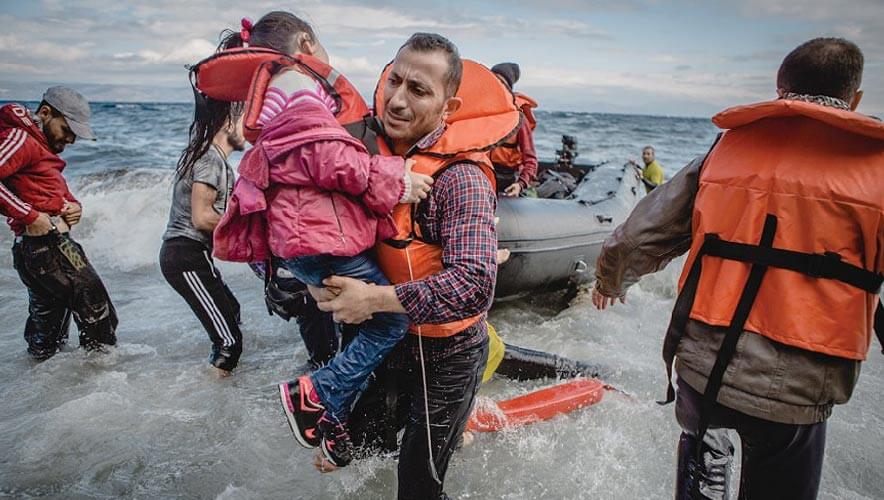Maritime Migration
For years, the Mediterranean Sea has offered no shortage of security issues for shippers. Threats of piracy and smuggling, as well as political instability and border disputes, have all challenged commercial seafarers.
The region is “complex, chaotic and sometimes dangerous,” says Ian Millen, COO of Dryad Maritime, a shipping intelligence firm.
Now, another source of instability has been added to the mix: the migration crisis. The number of refugees traversing the Mediterranean ballooned from roughly 300,000 in 2014 to more than 1 million in 2015, and the flow continues, according to the United Nations Refugee Agency and the International Organization for Migration (IOM).
The biggest driver of the migration is the war in Syria. But many other events are compelling some to flee via the Mediterranean, ranging from the ongoing conflict in Afghanistan to poverty in Kosovo to a brutal dictatorship in Eritrea. A lot of refugees take to the seas for asylum.
Some of these migration journeys end in tragedy—in 2015, more than 3,000 sea-borne migrants died, many of them leaving Libya for an attempted crossing into Europe. Frontex, the European Union’s border management agency, has classified various emigration routes that migrants are taking in different parts of the Mediterranean. Algerian and Moroccan nationals, as well as those from sub-Saharan Africa, often use a western Mediterranean route from North Africa to the Iberian Pennisula to head to Spain, France, and Italy. In contrast, refugees and migrants crossing through Turkey and headed to Europe use an eastern Mediterranean route via Greece, southern Bulgaria, or Cyprus. Large numbers of Syrian refugees have taken this latter route, as have some nationals from Somalia and Afghanistan.
The increase in migration through the Mediterranean has had impact on commercial shipping, even though it is hard to measure in precise numbers, Dryad analysts said in a recent risk assessment report.
Merchant ships are required to render assistance to any person found at sea in danger of being lost, according to the United Nations Convention on the Law of the Sea. Since 2014, more than 1,000 merchant ships have helped rescue more than 65,000 people crossing the Mediterranean, according to estimates from the International Chamber of Shipping.
This can be costly in a few ways. The loss of business that results when a commercial ship diverts for a rescue averages $10,000 per day for cargo ships, and more than $50,000 per day for oil tankers. Another risk is security. In rescues, cargo ships will often take on refugees with no papers and without a background check.
The Norwegian Shipowner’s Association estimates that merchant vessels pick up about 20 percent of the migrants who are recovered at sea in the Mediterranean. With many European nations now taking in fewer refugees because they are overwhelmed by the sheer numbers, some in the shipping industry say the burden on merchant ships to divert for rescues will increase.
“With no end to the conflicts and economic causes to this crisis in sight, the already notable impact upon commercial shipping can only be expected to increase,” the Dryad report says.
Of course, even before the most recent migration crisis, the Mediterranean has always been a complex and sometimes volatile geopolitical area. Nearly 1 million square miles in size, and with an average depth of close to 5,000 feet, the sea is bounded by the coasts of Asia, Africa, and Europe, stretching from the Strait of Gibraltar in the west to the Suez Canal in the east.
Close to two dozen countries have coastlines on the Mediterranean, and it serves as the sea boundary between a largely affluent region of Europe and a generally economically troubled region of North Africa. The sea has been the site of several long-running maritime territorial disputes, such as a conflict over the Gibraltar area between Spain and the United Kingdom.
However, a greater risk to stability is the current competition over natural resources, especially in the eastern Mediterranean, where large reserves of natural gas have been discovered. Countries like Israel, Lebanon, Cyprus, and Turkey are all vying for control of resource rights and shipping routes.
“An open naval conflict in the eastern Mediterranean is highly unlikely in the near term, but an inadvertent escalation due to incidents at sea is a possibility,” the report says. “As the region’s fleets begin to operate in close proximity and with greater frequency, even a minor accident or provocation might be mistaken for an act of aggression.”
On the maritime terrorism front, Islamic State (ISIS) of Barqa, the Libya-based arm of ISIS, has made statements that the group would support the closing of shipping lanes in the Mediterranean to target “crusader” ships and tankers. In 2014, al Qaeda made similar statements. However, these statements seem to be issued more for propaganda purposes than anything else, as the groups seem to have done little to build up any maritime terror operations.
“Current operations on land, and low level capabilities at sea, mean that neither the focus nor the capability is present for terrorist groups to conduct substantial attacks offshore,” the report says.
In the big picture, Millen asserts that while the current threats to stability and security in the Mediterranean are real, much successful commercial shipping continues, and the region still functions as a productive area of international trade.
“The overall situation in the Mediterranean is not as apocalyptic as some reports would have people believe,” Millen says.
